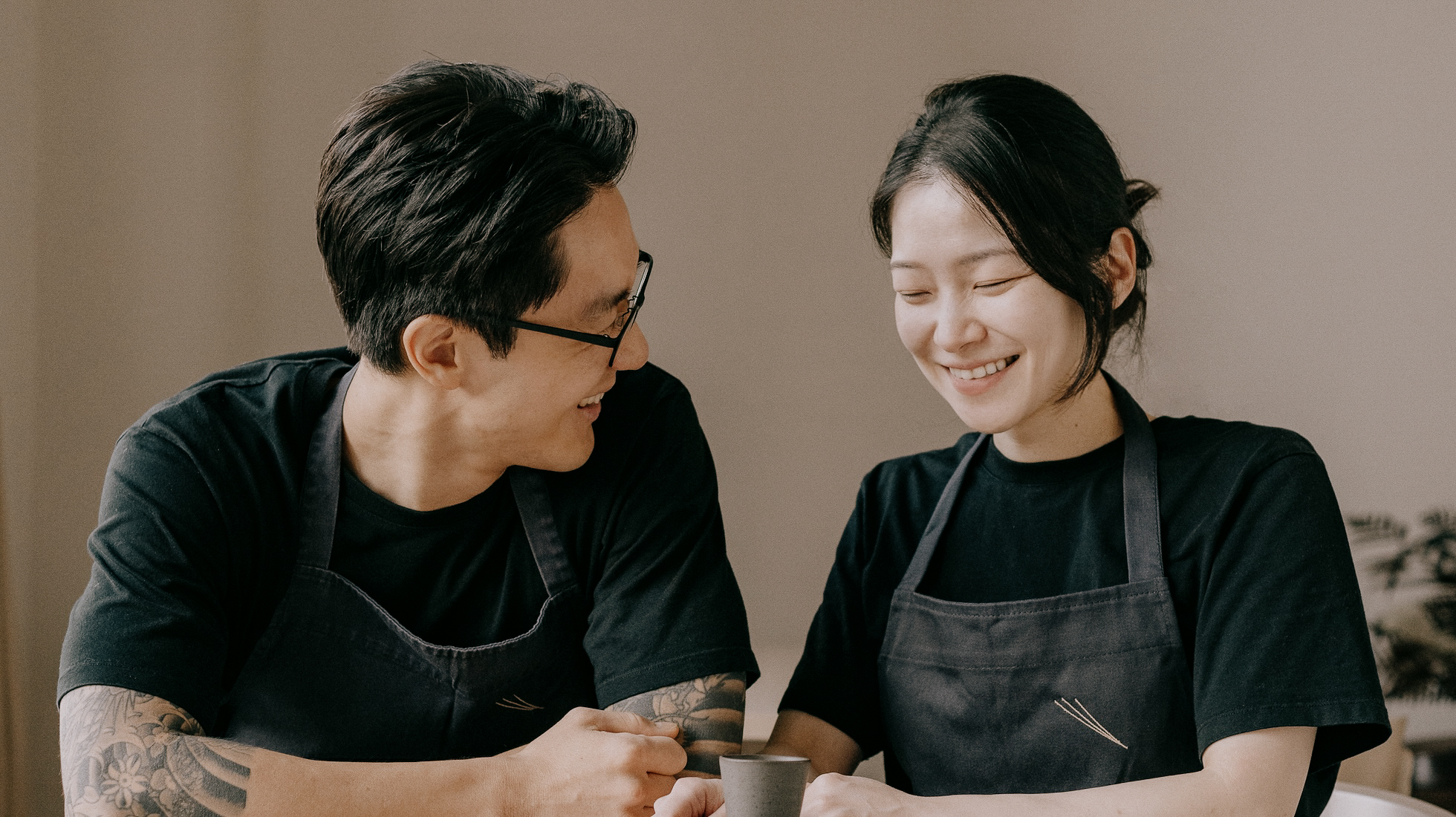New seasons bring new menus in restaurants – and it’s no different at Sollip, the Michelin-starred spot near London Bridge where chef Woongchul Park channels his Korean roots in thoughtful, delicate and refreshing dishes. Fresh additions this summer? Plates such as beet tartare with gamtae seaweed, courgette flower in a delicate dubu broth, and a cool, makgeolli, condensed cucumber and kiwi dessert that plays with Korean ingredients and European techniques – all offering seasonal, precise and beautiful flavours.
Before relocating to London, Jeju Island was where Park spent many summer vacations – the chef lived and worked on the southern South Korean island, soaking up its beauty and tranquility, and finding gastronomic inspiration that continues to run through his cooking today.
Jeju might be known as South Korea’s honeymoon island (thanks, K-culture), but it’s not your typical castaway situation. According to Park – one half of the powerhouse duo behind Sollip, alongside his partner, Bomee Ki – this volcanic outcrop is a haven for quiet luxury, knockout noodles and soul-stirring landscapes. Here, he shares his top five recommendations for a Jeju trip.
Before relocating to London, Jeju Island was where Park spent many summer vacations – the chef lived and worked on the southern South Korean island, soaking up its beauty and tranquility, and finding gastronomic inspiration that continues to run through his cooking today.
Jeju might be known as South Korea’s honeymoon island (thanks, K-culture), but it’s not your typical castaway situation. According to Park – one half of the powerhouse duo behind Sollip, alongside his partner, Bomee Ki – this volcanic outcrop is a haven for quiet luxury, knockout noodles and soul-stirring landscapes. Here, he shares his top five recommendations for a Jeju trip.
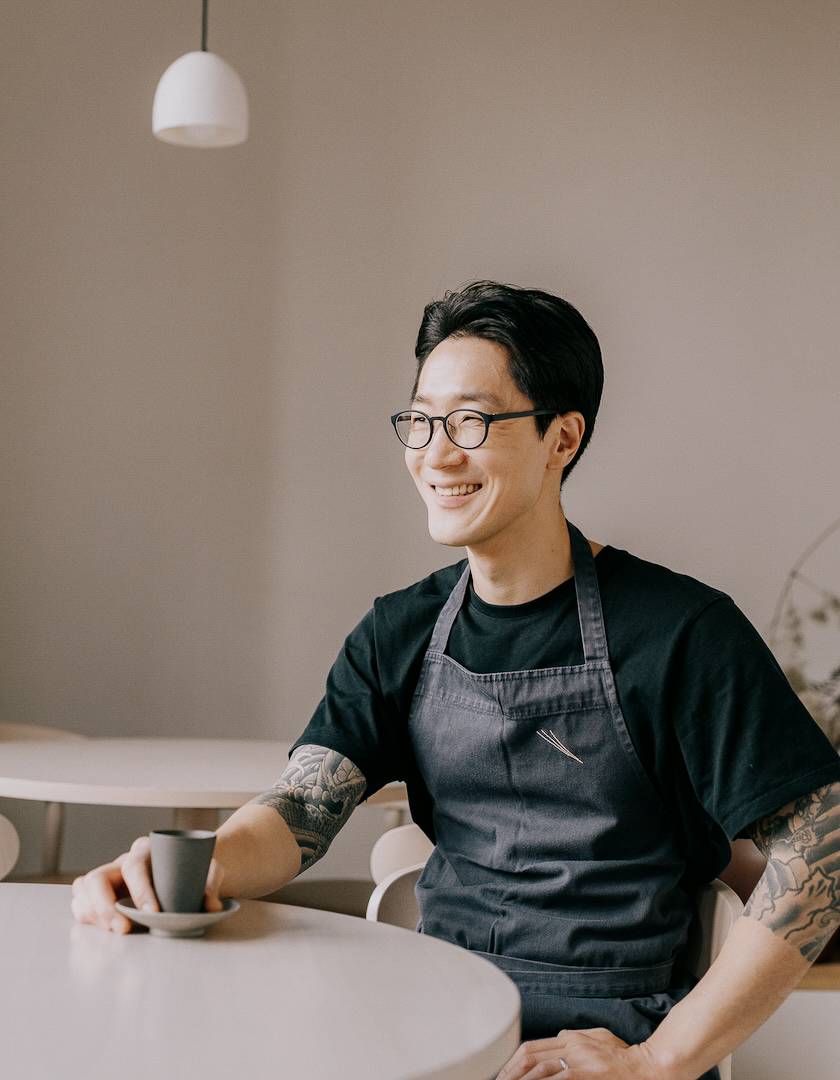
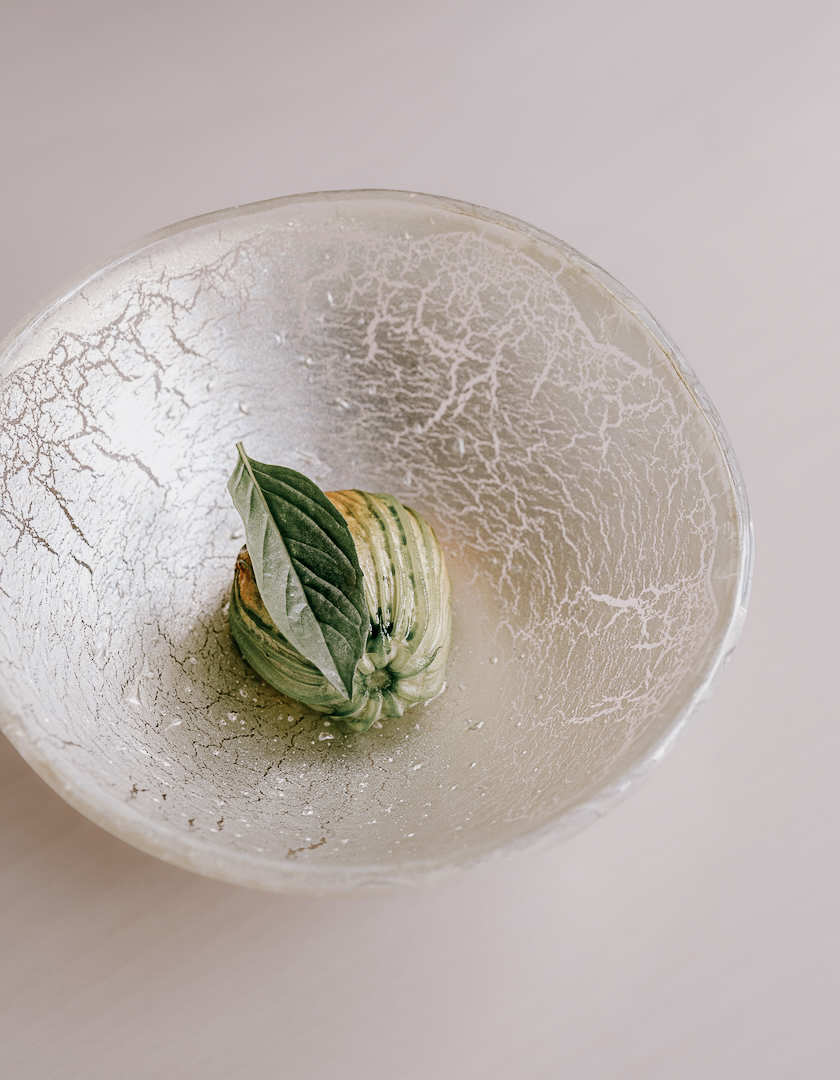
Woongchul Park, left, and a dish from Sollip’s summer menu | Credit: Rebecca Dickson
To experience the full effect, book an ocean-facing suite. And skip the tasting menu in favour of a simpler snack. “One of our small traditions is enjoying [the hotel’s] friend chicken after a swim – simple, but unforgettable,” Park says.
haevichi.com/jeju
“Every porridge on the menu is excellent, and prepared with care,” Park says, “but my personal favourite is the siraegi-gukbap [dried radish leaf soup with rice]. They make their own doenjang [fermented soybean paste], which gives the broth a clean but deeply flavourful character that’s hard to find elsewhere.”
End your meal with the restaurant’s homemade sikhye, a chilled sweet rice drink. “I’d say this is my and Bomee’s favourite place to eat in all of Korea,” Park says.
130 Seongeumminsok-ro, Pyoseon-myeon, Seogwipo
Haevichi Hotel
Located in Pyoseon, on Jeju’s quieter eastern edge, this low-key luxury hotel was a regular escape for Park – even when he was living and working on the island. “It was a perfect getaway for our family. We love a good staycation,” he says. “It’s rarely crowded and allows you to feel the quiet, natural atmosphere of Jeju.”To experience the full effect, book an ocean-facing suite. And skip the tasting menu in favour of a simpler snack. “One of our small traditions is enjoying [the hotel’s] friend chicken after a swim – simple, but unforgettable,” Park says.
haevichi.com/jeju
Yetnal Patjuk (옛날팥죽)
Tucked between the stone houses of Seongeup Folk Village, Yetnal Patjuk is a tiny, traditional restaurant run by a mother-and-daughter duo. The menu leans mostly vegan.“Every porridge on the menu is excellent, and prepared with care,” Park says, “but my personal favourite is the siraegi-gukbap [dried radish leaf soup with rice]. They make their own doenjang [fermented soybean paste], which gives the broth a clean but deeply flavourful character that’s hard to find elsewhere.”
End your meal with the restaurant’s homemade sikhye, a chilled sweet rice drink. “I’d say this is my and Bomee’s favourite place to eat in all of Korea,” Park says.
130 Seongeumminsok-ro, Pyoseon-myeon, Seogwipo

Jeju cliffs | Credit: Felix Wiedemann, Unsplash
“This is where our family always went,” Park says. “The broth is slow-cooked and never overpowering, with a well-balanced depth that makes it incredibly comforting – and easy to come back to.”
31-3 Jingun-gil, Jeju-si
“One place we never miss is Yura-Imone, which makes what Bomee and I both agree is the best hotteok [Korean-style filled pancake] we’ve ever had,” Park says. “It’s a great place to get a feel for daily life in Jeju, as well as to pick up something tasty.”
20 Gwandeok-ro 14-gil, Jeju-si
Guksi Teumeong (국시트멍)
This unassuming Jeju-si [Jeju City] eatery specialises in gogi-guksu, the island’s signature pork noodle soup – a winning combination of wheat noodles and simmered pork in a light, flavourful broth.“This is where our family always went,” Park says. “The broth is slow-cooked and never overpowering, with a well-balanced depth that makes it incredibly comforting – and easy to come back to.”
31-3 Jingun-gil, Jeju-si
Dongmun Traditional Market
A short drive from the island’s airport, Dongmun Traditional Market is one of Park’s go-to places for fresh produce, selling everything from vegetables and fruit to seafood. It’s also home to a number of hole-in-the-wall food joints tucked between clothing vendors.“One place we never miss is Yura-Imone, which makes what Bomee and I both agree is the best hotteok [Korean-style filled pancake] we’ve ever had,” Park says. “It’s a great place to get a feel for daily life in Jeju, as well as to pick up something tasty.”
20 Gwandeok-ro 14-gil, Jeju-si
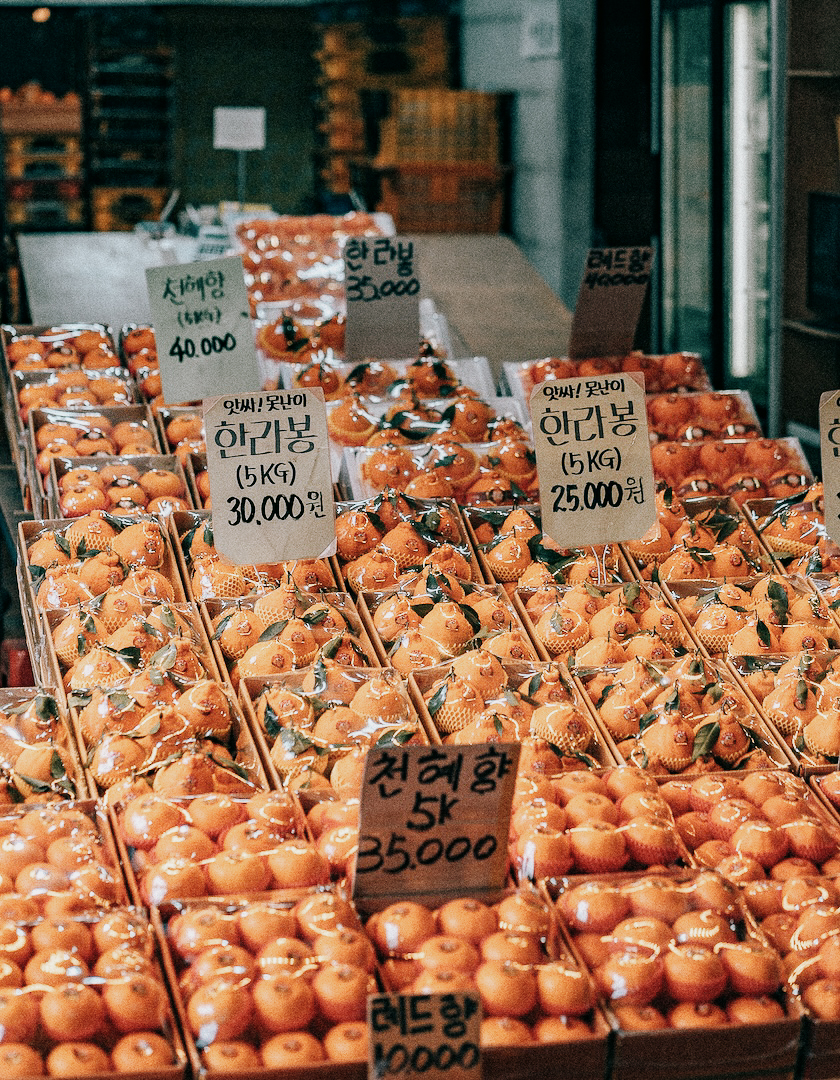
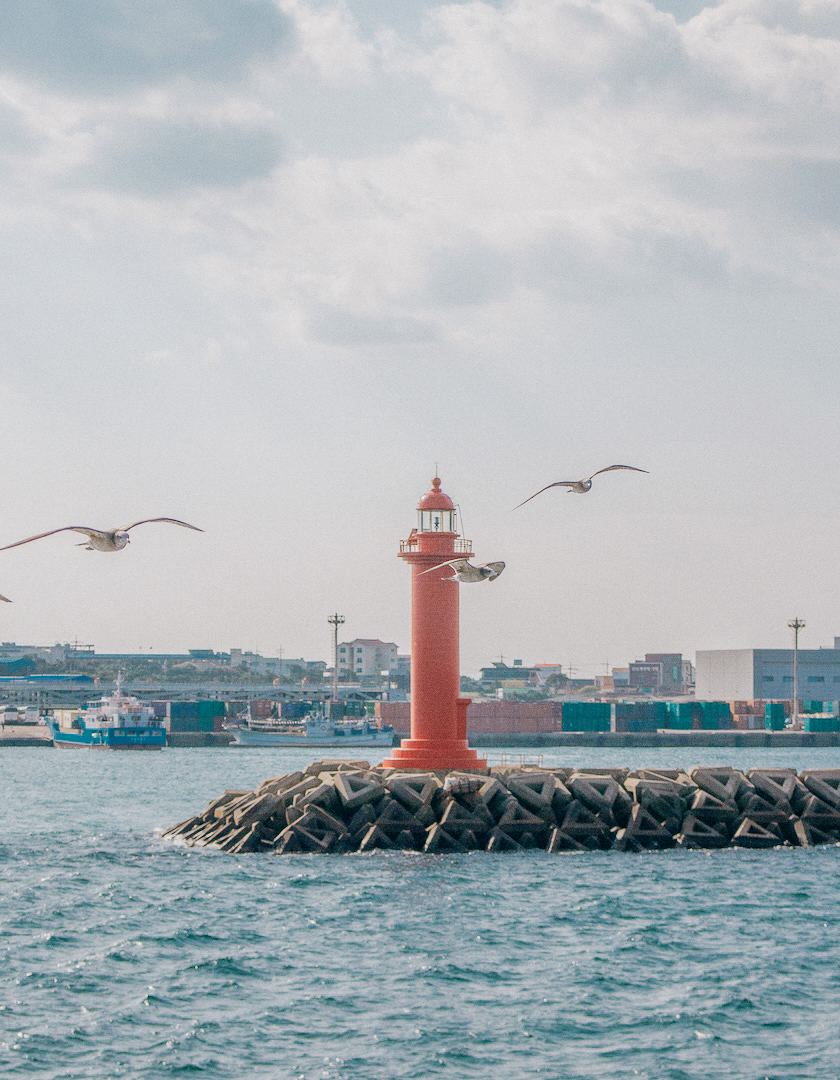
A market produce stall on Jeju, left, and an island lighthouse | Credit: Daniel Bernard, Hoyoung Choi, Unsplash
‘It’s rarely crowded,” says Park, “and that stillness allows you to take in the wind, the earth and the scent of the grass. It’s not a dramatic landscape – rather, it feels intimate and grounded. It’s one of the few places I return to just to breathe and be still.”
San 6, Sehwa-ri, Jeju-si
Akkeun Darangshi Oreum (아끈다랑쉬 오름)
This gentle hill on the island’s eastern side tops out at around 380m and takes just 15 minutes to climb – but the pay-off is big. At the summit, views stretch across Jeju’s dramatic coastline and, more often than not, you’ll have the hill all to yourself.‘It’s rarely crowded,” says Park, “and that stillness allows you to take in the wind, the earth and the scent of the grass. It’s not a dramatic landscape – rather, it feels intimate and grounded. It’s one of the few places I return to just to breathe and be still.”
San 6, Sehwa-ri, Jeju-si




